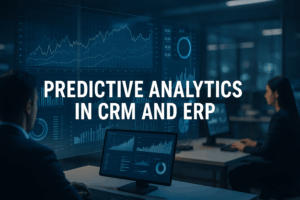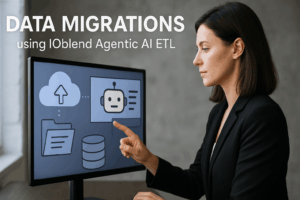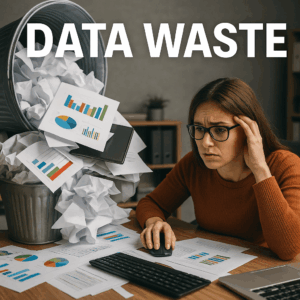IOblend and Streamsets are both advanced data integration platforms that cater to the growing needs of businesses, especially in real-time analytics use cases. While there are similarities, they also bring different features to the table. Here’s an overview of their capabilities:
Real-time Data Integration
IOblend:
- Supports real-time, production-grade data pipelines using Apache Spark with proprietary tech enhancements.
- Can integrate equally streaming (transactional event) and batch data due to its Kappa architecture with full CDC capabilities.
Streamsets:
- Designed to handle streaming data with native support for change data capture (CDC) and supports both real-time and batch processing.
Low-code/No-code Development
IOblend:
- Provides low-code/no-code development, facilitating quicker data migration and minimization of manual data wrangling.
Streamsets:
- Features a drag-and-drop interface for designing data pipelines and also supports scripting for more intricate requirements.
Data Architecture
IOblend:
- Enables delivery of both centralized and federated data architectures.
Streamsets:
- Offers a flexible architecture allowing for both centralized and decentralized data operations.
Performance & Scalability
IOblend:
- Boasts low-latency, massively parallelized data processing with speeds exceeding 10 million transactions per second.
Streamsets:
- Optimized for performance in large-scale environments and supports various scalability configurations to handle growing data loads.
Partnerships & Cloud Integration
IOblend:
- Has real-time integration capabilities with Snowflake, AWS, Google Cloud and Azure products and is an ISV technology partner with Snowflake and Microsoft.
Streamsets:
- Provides integration with major cloud platforms including AWS, Azure, Google Cloud, as well as other platforms and data stores.
User Interface & Design
IOblend:
- Consists of two main components: IOblend Designer and IOblend Engine, facilitating design and execution respectively.
Streamsets:
- Offers a singular, intuitive platform called Streamsets Data Collector, tailored for designing, deploying, and monitoring data pipelines.
Data Management & Governance
IOblend:
- Ensures data integrity with features like automatic record-level lineage, CDC, SCD, metadata management, de-duping, cataloguing, schema drifts, windowing, regressions, eventing, late-arriving data, etc. integrated in every data pipeline.
- Connects to any data source via ESB/API/JDBC/flat files, both batch and streaming (inc. JDBC) with CDC (supports all three log, trigger or query based).
Streamsets:
- Prioritizes data drift management, ensuring pipeline robustness against changes in data, infrastructure, and schemas. Also has strong monitoring capabilities.
- 100+ pre-built connectors to all major data sources
Cost & Licensing
IOblend:
- The Developer Edition is free, while the Enterprise Suite requires a paid annual license.
Streamsets:
- Offers a free community version and premium versions with added functionalities and support.
Deployment & Flexibility
IOblend:
- Operational on any cloud, on-premises, or in hybrid settings. Comes in Developer and Enterprise Editions.
Streamsets:
- Supports deployment in cloud, on-premises, and edge devices, ensuring flexibility in data operations.
Community & Support
IOblend:
- Being relatively new, its community is still burgeoning. Provides online support for Developer Edition and premium support for Enterprise Edition.
Streamsets:
- Sports a vibrant community providing resources, plugins, and assistance. Premium support is also available for enterprise-grade users.
To sum up, while IOblend places emphasis on real-time data integration and low-code solutions, Streamsets is tailored for handling streaming data with an emphasis on data drift management. Choosing between them would rest on the specific requirements, infrastructure, and objectives of an organization.

Rethinking the Feature Store concept for MLOps
Rethinking the Feature Store concept for MLOps Today we talk about Feature Stores. The recent Databricks acquisition of Tecton raised an interesting question for us: can we make a feature store work with any infra just as easily as a dedicated system using IOblend? Let’s have a look. How a Feature Store Works Today Machine

CRM + ERP: Powering Predictive Analytics
The Data-Driven Value Chain: Predictive Analytics with CRM and ERP 📊 Did you know? A study on real-time data integration platforms revealed that organisations can reduce their average response time to supply chain disruptions from 5.2 hours to just 37 minutes. A Unified Data Landscape The modern value chain is a complex ecosystem where every component is interconnected,

Enhancing Data Migrations with IOblend Agentic AI ETL
LeanData Optimising Cloud Migration: for Telecoms with Agentic AI ETL 📡 Did you know? The global telecommunications industry is projected to create over £120 billion in value from agentic AI by 2026. The Dawn of Agentic AI ETL For data experts in the telecoms sector, the term ETL—Extract, Transform, Load—is a familiar, if often laborious, process. It’s

LeanData: Reduce Data Waste & Boost Efficiency
LeanData Strategy: Reduce Data Waste & Boost Efficiency | IOblend 📊 Did you know? Globally, we generate around 50 million tonnes of e-waste every year. What is LeanData? LeanData is more than a passing trend — it’s a disciplined, results-focused approach to data management.At its core, LeanData means shifting from a “collect everything, sort it later” mentality to

The Data Deluge: Are You Ready?
The Data Deluge: Are You Ready? 📰 Did you know? Some modern data centres are being designed with modularity in mind, allowing them to expand upwards – effectively “raising the roof” – to accommodate future increases in data demand without significant structural overhauls. — Raising the data roof refers to designing and implementing a data

The Proactive Shift: Harnessing Data to Transform Healthcare
The Proactive Shift: Harnessing Data to Transform Healthcare Outcomes 🔔 Did You Know? According to the National Institutes of Health, the implementation of data analytics in healthcare settings can reduce hospital readmissions by over 33%. The Proactive Healthcare Paradigm The healthcare industry has traditionally operated on a reactive model, where intervention occurs only after symptoms manifest
